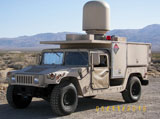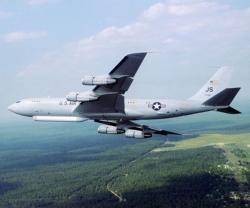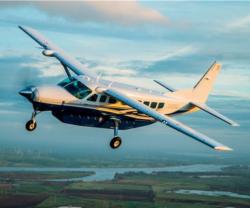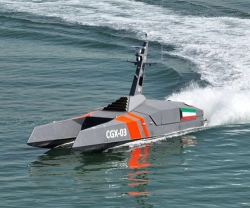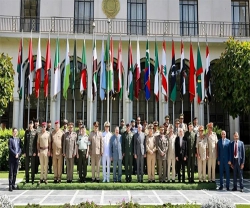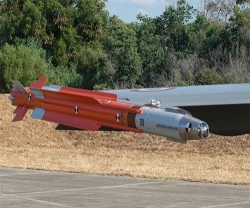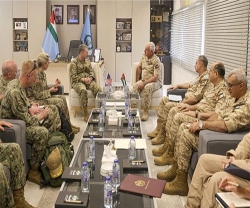NGC Demonstrates HAMMR
14.10.2011 Security
Northrop Grumman Corporation (NGC) successfully demonstrated the Highly Adaptable Multi-Mission Radar (HAMMR), which is a derivative of the Defense Department's Ground Based Fighter Radar (GBFR), a multi-mission ground tactical radar designed to provide the U.S. Army with counter-rocket, artillery and mortar (C-RAM) as well as air defense capabilities while "on-the-move."
The GBFR contract was awarded to Northrop Grumman in 2009 by the U.S. Army Aviation and Missile Research, Development and Engineering Center at Redstone Arsenal, Alabama.
HAMMR features a compact, lightweight ground configuration that employs active electronically scanned array (AESA) antenna technology from airborne fighter aircraft. In this configuration, the radar provides 360-degree coverage while mounted and moving on a vehicle and is easily deployable from a variety of expeditionary platforms, providing the rapid transport capability required by today's warfighter. The testing took place at the Army's Yuma Proving Grounds.
"HAMMR's on-the-move capacity, as demonstrated at Yuma, will provide the U.S. ground forces with critical capabilities that ensure mission success in today's irregular warfare environment," said John Jadik, Vice President of Weapons and Sensors for Northrop Grumman's Land and Self Protection Systems Division. "This demonstration further positions Northrop Grumman as a leader in AESA technologies."
The heart of the HAMMR system, the AESA, is composed of more than a thousand programmable transmit/receive modules that enable HAMMR to successfully detect, track and engage numerous target types, at multiple positions, and in varying paths and trajectories. The flexibility of HAMMR's AESA architecture enables growth to address new threats without redesigning the system, a major benefit compared to existing radar systems.
The GBFR contract was awarded to Northrop Grumman in 2009 by the U.S. Army Aviation and Missile Research, Development and Engineering Center at Redstone Arsenal, Alabama.
HAMMR features a compact, lightweight ground configuration that employs active electronically scanned array (AESA) antenna technology from airborne fighter aircraft. In this configuration, the radar provides 360-degree coverage while mounted and moving on a vehicle and is easily deployable from a variety of expeditionary platforms, providing the rapid transport capability required by today's warfighter. The testing took place at the Army's Yuma Proving Grounds.
"HAMMR's on-the-move capacity, as demonstrated at Yuma, will provide the U.S. ground forces with critical capabilities that ensure mission success in today's irregular warfare environment," said John Jadik, Vice President of Weapons and Sensors for Northrop Grumman's Land and Self Protection Systems Division. "This demonstration further positions Northrop Grumman as a leader in AESA technologies."
The heart of the HAMMR system, the AESA, is composed of more than a thousand programmable transmit/receive modules that enable HAMMR to successfully detect, track and engage numerous target types, at multiple positions, and in varying paths and trajectories. The flexibility of HAMMR's AESA architecture enables growth to address new threats without redesigning the system, a major benefit compared to existing radar systems.
Previous PostIMB: Attacks on Ships Reach an All-Time High
Latest news
Latest events
DefenPol China2025 - 7th Guangzhou International Defense & Police Exhibition & Summit
11 - 12 Jul 2025Nan Fung International Convention & Exhibition Center (NICEC) - ChinaIDEF 2025 Turkey - International Defence Industry Fair
22 - 27 Jul 2025Istanbul Expo Center - TurkeyDSEI 2025
09 - 12 Sep 2025Excel, London - United KingdomIntersec Saudi Arabia
29 Sep - 01 Oct 2025Riyadh International Exhibition & Convention Centre - Saudi Arabia

